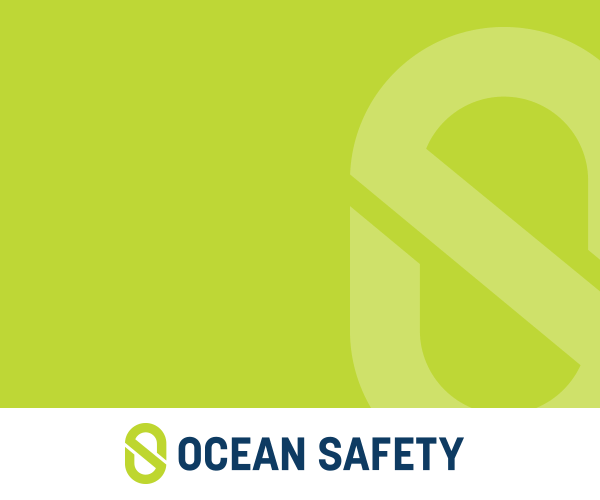Standard of Proof? |
Post Reply 
|
Page <1 45678 11> |
| Author | |
RS400atC 
Really should get out more 
Joined: 04 Dec 08 Online Status: Offline Posts: 3011 |
 Post Options Post Options
 Quote Quote  Reply Reply
 Topic: Standard of Proof? Topic: Standard of Proof?Posted: 12 Jun 12 at 5:54pm |
But it is acceptable for people to be wrong, the penalty is DSQ from that race, which need not be a big issue or a stain on their character. Rule 69 is a different beast though. It is a question of deliberate intent to ignore the rules. |
|
 |
|
Rupert 
Really should get out more 
Joined: 11 Aug 04 Location: Whitefriars sc Online Status: Offline Posts: 8956 |
 Post Options Post Options
 Quote Quote  Reply Reply
 Posted: 12 Jun 12 at 7:10pm Posted: 12 Jun 12 at 7:10pm |
|
Why do your teen sailors seem to have an endemic problem with following the rules? What is the standard of adult rule adherence? Does your club have a racing/squad based junior section, a more cruising based one, or none at all?
Seems to me that looking at what happens in protests is closing the stable door after the horse has bolted. Go back to basics with what is expected from them both on the water and on the land, and you might just end up with a much happier, friendlier club. If necessary, get all your juniors in a room together with a rules expert from the RYA, so there is no doubt that he or she will be correct ion what they say, and go through it step by step, what is allowed, what isn't, and what the whole concept of self policing means. |
|
|
Firefly 2324, Puffin 229, Minisail 3446 Mirror 70686
|
|
 |
|
Brass 
Really should get out more 
Joined: 24 Mar 08 Location: Australia Online Status: Offline Posts: 1151 |
 Post Options Post Options
 Quote Quote  Reply Reply
 Posted: 12 Jun 12 at 10:39pm Posted: 12 Jun 12 at 10:39pm |
|
Here's a rather long paper I just posted on Sailing Anarchy. Perhaps people will find the detailed discussion helpful.
61.1 Informing the Protestee
(a) A boat intending to protest shall inform the other boat at the first reasonable opportunity. When her protest concerns an incident in the racing area that she is involved in or sees, she shall hail ‘Protest’ and conspicuously display a red flag at the first reasonable opportunity for each. She shall display the flag until she is no longer racing. However, (1) if the other boat is beyond hailing distance, the protesting boat need not hail but she shall inform the other boat at the first reasonable opportunity; (2) if the hull length of the protesting boat is less than 6 metres, she need not display a red flag; (3) if the incident results in damage or injury that is obvious to the boats involved and one of them intends to protest, the requirements of this rule do not apply to her, but she shall attempt to inform the other boat within the time limit of rule 61.3. Basic Question
People ask 'why do we have such detailed and prescriptive requirements for informing the protestee in rule 61.1(a)?' Underlying Principles of justice and fairness
Better ten guilty men walk free than one innocent man goes to the gallows. Following this principle, all sorts of rights and procedural protections are extended to accused parties, starting with the presumption of innocence, the right to silence, and strict procedural requirements, such as grand-jury or committal, and strict formulation of indictment or charging requirements, which can pre-emptively invalidate a trial, no matter how serious the offence might be. A similar approach applies to protest hearings in sailing. Functions of the rule 61.1(a) requirements
Why is it necessary for the protesting boat to inform the protestee at all? Couldn't the Race Office just do that after the written protest has been lodged? The functions of requirements for informing the protestee generally are: · so that the protested boat knows that she is being protested and has the opportunity to take a rule 44 penalty if she wishes; · so that the protestee knows to look at the notice board to find out if the protest has been followed through and she is required to attend a hearing; · so that the protestee has time before the protest meeting to line up witnesses etc; · to let every other competitor and the race committee know that the protesting boat is 'racing under protest' and is likely to deliver a formal protest after the race; and Why are such strict requirements for hail and flag necessary? This seems to be the issue which causes the most worry. The functions of the requirements for hail and flag at the first reasonable opportunity are: · proximity of hail and flag to the alleged incident materially helps the protestee to identify the incident and make an informed decision about taking a rule 44 penalty, or later to prepare her defence for a protest hearing · It's the 'other side of the coin' to the protesee's obligation to take a rule 44 penalty as soon after the incident as possible: to do this, it is necessary that the protestee be informed of the intention to protest as soon as reasonably possible, which is, at the first reasonable opportunity. · importantly, to prevent competitors (or more worrisome still, the coaches and parents of junior competitors) 'cooking up' protests off the water, long after the on-water incident has happened, or picking and choosing among several incidents, which one the wish to pursue a formal protest on. The game has rules - Different rules apply for serious cases
At a perhaps superficial level, the reason for strict informing the protestee requirement is, it's only a game and you must play the game according to the rules, whether you like them or not. As long as it's 'just a game', why should anyone be worried about the rationality and functionality of the rules? Lots of games have rules that aren't really rational, consider the off-side rule in football. In respect of the hail and flag requirement, rule 61.1(a)(3), specifically provides for what happens when it ceases to be 'just a game' because there is damage or injury. In respect of 'blatant' rule-breaking, there is another way in which the hail and flag requirements, as well as all the other formal protest requirements are switched off and that is, in the event of a 'gross' breach of the rules, a rule 69 hearing. Because, to operate effectively and consistently, rules need some distinct limits: · The limit for rule 69 is that the breach of the rules must be 'gross' As far as 'blatant' rule-breaking, as long as it stops short of 'gross', the rules don't distinguish 'blatant' from 'non-blatant' rule-breaking. The rules don't support any sort of moral crusading against 'blatent' rule-breaking, just as they don't provide for different penalties for 'just a little' breach. A breach is a breach is a breach. There may also be an underlying concern about objective determination of what is or is not 'blatant'. It would almost inevitably lead to considerations of intentionality or other mental state issues, which, the rules, being based as nearly as possible on observable conduct only, are not well-adapted to deal with. And it would not be a good thing to move the rules towards the many and varied species of 'thought-crime': it is hard enough for protest committees to resolve disputes based on observable conduct as it is, without adding an additional, inevitably moralistic, dimension. It can be argued that two wrongs don't make a right. By failing to hail and flag, a boat intending to protest breaks rule 61.1(a). The rights of the boat to protest and the rights of the protested boat to know she has been protested are equal. It is not unreasonable that a boat that wishes to protest but which breaks rule 61.1(a), should suffer the detriment of losing her entitlement to have a protest decided. In the absence of hail and flag following an incident, a potential protestee (or anyone else) is justified in inferring that no nearby boat intends to protes. Prompt hail and flag actions on the water facilitate the taking of rule 44 penalties. It might be said that strict application of hail and flag requirements in protest procedures will thus encourage the proper use of rule 44 penalties. More detailed questions
Why is it necessary to require that just one word 'Protest' is the only word that may be used? Effective receipt or Understanding of a communication is difficult to prove, and all too easy for a protestee to deny. Hail of 'protest' and red flag are actions not reliant on any 'receipt' or 'understanding' by the protestee, which under the rules are together taken to be sufficient communication of the intention to protest, without further investigation. Hail of the specified word 'protest' increases the likelihood that the intention signified will be unambiguously understood. Because, given that there is always an option for a boat not to protest, there needs to be a conventional, unambiguous signification of the intention to protest. Why is it necessary for there to be a flag as well as a hail? The requirement for the hail of 'Protest' to be accompanied by the conspicuous display of a red flag to confirm it, significantly increases the likelihood that the intention so signified will be noticed and understood by the protestee. Why is so much emphasis given to the promptness or immediacy of both hail and flag? The importance of a boat signifying her intention to protest has changed over time. Now that the taking of on-water penalties is the normal, expected consequence of breaking a rule on the water, it is critically important that a protestee knows what she is being protested for, so that she can decide whether or not she wishes to take a penalty for the incident. If she knows exactly when she did whatever it is that is alleged to have broken a rule, she has a good chance of inferring what or how she may have broken a rule, and thus make a reasonable decision about whether or not to take an on-water penalty. For this reason, an unambiguous hail and flag signal, at the first reasonable opportunity will significantly assist the protestee in identifying the incident being protested, as 'what she was doing immediately prior to the hail and flag'. This is all the more relevant when there may be two or more possible incidents, say in a crowded start or a mark-rounding, which she may need to consider. Prompt hail and flag will assist in identifying the relevant incident. Why is it necessary to keep the protest flag displayed continuously from the time of the incident until the boat is no longer racing? The functions of flying the protest flag will be discharged if the protesting boat displays the flag to the protestee and the protestee sees it, about the time of the incident, and the race committee sees it as she finishes. The only useful purpose 'keeping the flag flying between the time of the incident and finishing is to avoid confusion, and to increase the probability that the protestee will see it if she did not see it at the time of the incident. One needs to bear in mind that these rules cannot be expected to produce an iron-clad guaranteed result. The best they can do is to maximise the likelihood that the desired outcome will be achieved. There is a history and a legacy in the wording of any particular rule. Rules were not necessarily designed rationally and instrumentally for the present purpose in the first place, and have been incrementally amended (read 'tinkered with by well-meaning, but not necessarily skilled drafters') over the years. The basic flag and hail requirements as they stand, have been in the rules since the Vanderbilt rules of 1935, at least. Edited by Brass - 12 Jun 12 at 10:40pm |
|
 |
|
JimC 
Really should get out more 

Joined: 17 May 04 Location: United Kingdom Online Status: Offline Posts: 6662 |
 Post Options Post Options
 Quote Quote  Reply Reply
 Posted: 12 Jun 12 at 11:10pm Posted: 12 Jun 12 at 11:10pm |
|
I'm sorry, whilst that is the rules at the moment, I don't think the logic stands up.
1) Bearing in mind the fundamental rule, why is it in any way unfair that a boat that has broken a rule, and thus is required to take a penalty, should be able to evade the consequences of her action by a procedural error on the part of the opposition. 2) The argument about notification and alternative penalties should logically be about what penalty is opposed, not about whether a hearing is held at all. And a couple of questions: 1) Do you think the tendency to throw out protests for minor procedural errors such as having left the flag in a locker instead of hanging it on the backstay increases or decreases the quality of rule observance? 2) if the requirement were changed so that the hail/flag had to be made within say half a leg of the incident or 5 minutes, how do you think that would increase or reduce the quality of rule observance? |
|
 |
|
Presuming Ed 
Really should get out more 
Joined: 26 Feb 05 Location: United Kingdom Online Status: Offline Posts: 641 |
 Post Options Post Options
 Quote Quote  Reply Reply
 Posted: 12 Jun 12 at 11:21pm Posted: 12 Jun 12 at 11:21pm |
|
I'm still stuck at: if the point of the hail and flag is to inform the infringer, if the infringer acknowledges the infringement before the infringee actually hails "protest", why is it necessary to hail "protest"? The infringer has already acknowledged their requirement to comply with the basic principle.
Edited by Presuming Ed - 12 Jun 12 at 11:22pm |
|
 |
|
sargesail 
Really should get out more 
Joined: 14 Jan 06 Location: United Kingdom Online Status: Offline Posts: 1459 |
 Post Options Post Options
 Quote Quote  Reply Reply
 Posted: 13 Jun 12 at 12:13am Posted: 13 Jun 12 at 12:13am |
|
Been following this at work with a frustrating inability to post. The title is standard of proof - I think the standard must be considered differently for a Rule 2 or Rule 69 protest.
I accept everything said about the need to hail protest as the first thing one does in order to eliminate the risk. That is my own drill and I try and stick to it. I'm also utterly convinced that I have been on the end of at least two protest declared valid where the protestor simply lied when asked if they'd hailed protest. But the PC went with the protestor's evidence, and why shouldn't it? There could be a lesson there.... But I'm also in full agreement with Presuming Ed's last post. I was in exactly this situation last tiem out. As port I did not complete a close cross. The starboard boat tacked, and before we collided I yelled "spinning" and then began my own tack. We were on a one turn system so I gybed and returned to close hauled and sailed on. Post race a discussion ensued as to whether I had completed the penalty with a third party. I would have had no problem with the validity of a protest from my starboard tacker, and that could have come about....however they recollected the sequence of hail, tack. There is also the other side of the coin: what is the consequence for rules observance. There is an easy out for a boat which has infringed: say you'll spin, then sail on, or just do one of two turns. Infringed against may not have used "Protest" in that post incident period, and, by a strict interpretation would have no recourse to the Protest Committee other than the Rule 2/69 option, with all the issues that go with that. Taking OFFFFFFS example - for me there are three stages here. Is the protest valid? There are lots of reasons (Brass leads on them) why it might not be, but also one key one on favour of why it might: that if A believed that B (GW) was going to exonerate themselves based on a clear indication of intent from B (and there would need to be some good evidence on which to find facts here, something like, "I'll take a turn".), but subsequently turns out not to have done so, then there is a case that a post-racing protest may be valid. I don't have the full text of RYA Appeal 1981/7 to hand When a boat protests, believing that another boat has not taken a penalty as described in rule 44.2, she must establish first that the other boat broke a rule of Part 2 It would be interesting to know if the case included a hail at the time of the incident. Then there is the question of whether a rule of Part 2 was broken. In this case easy - both boats in agreement. Fact can be found. Then there is the question of whether B did her turns. I'm surprised that no-one has commented on timeframe here. We have this from OFFFFFFS: At the hearing C is asked whether they were watching B for "all of the time" and they answered that they were probably watching for 90% of the time whilst also starting the race themselves. Jury concludes that they could not rule out the remote possibility that B may have performed two turns during the 10% of the time that C was not looking at them and therefore C's evidence is inconclusive. It could be established that: 1. Boat A caught Boat B very shortly after the start. 2. The occupants of the committee boat did not recall seeing A doing turns immediately after the start, even though there were 2 people running the race and only 5 boats taking part. 3. C did not overtake A at any point. I am surprised that no-one has commented on the fact that there is only a limited window for B to do her turns. If the 90% of the time that C had eyes on B included the period after the incident (and I seem to recall reading that we're talking about 90% of the whole beat), and C can say that she didn't see turns, then it can be found that B did not exonerate herself. This because: "After getting well clear of other boats as soon after the incident as possible" she has to do her turns. The respondibilty is on B to get clear, and that starts immediately she accepts the penalty. So to where we are: A. We have a Protest found to be valid. B. We have an infringement of Rule 2 C. We may or may not have evidence on which to find as a fact that there was an indication to complete a turn - but if we have A then C is irrelevant. D. We have a protest dismissed because there was insufficient evidence of the Rule Breach. So what actions are open: To the protestor: Find some more evidence (mention is made of teh Safety Boat). New evidence can be used as grounds to reopen. If that evidence allows the fact to be found that B did not do her turns, then she can be DSQ. Note no need for Rule 2/69, since as the result of a valid report to a PC the PC will be ableto establsuh that an infringemnet took place. If the protestee is binned on the basis of this new evidence then they/the PC should present it for appeal/Q&A, and we can have some useful Case Law. |
|
 |
|
Brass 
Really should get out more 
Joined: 24 Mar 08 Location: Australia Online Status: Offline Posts: 1151 |
 Post Options Post Options
 Quote Quote  Reply Reply
 Posted: 13 Jun 12 at 12:55am Posted: 13 Jun 12 at 12:55am |
By dragging in 'acknowledgement' and 'intention to take turns', you are converting what should have been a simple rules of Part 2 When Boats Meet, protest (if only you had hailed and flagged properly) into a rule 2 sportsmanship protest, which is much more complicated, contains mental elements which are much more difficult to prove satisfactorily (to any standard), is much more unpleasant all round, and IMHO STILL requires prompt hail and flag.
As far as the rules, other than TR and RR are concerned 'acknowledgement' has no meaning or consequence.
Sure, everybody knows that 'A boat that knows she has broken a rule must take a penalty' Given that rule 44 is plainly cast in discretionary terms 'A boat may take a ... penalty when she may have broken a rule', It is at least arguable that a boat may choose to take a rule 44 penalty or wait for a protest hearing and take a penalty decided by the protest committee.
If a boat 'acknowledges' that she broke a rule, then that is evidence that she 'knew' she had broken a rule, so, depending on the content and quality of the 'acknowledgement', you could well be travelling into rule 2 territory.
But why would any sensible competitor 'acknowledge' breaking a rule at all? From the protestee's point of view:
I would also be very careful about any notion that 'saying she will take a penalty' constitutes an 'acknowledgement' that she broke a rule. But why can't we just run with the simple thing: If a boat thinks that another boat has broken a rule and wants that boat to be penalised she must hail 'Protest' and, if she is over 6m, conspicuously display a red flag at the first reasonable opportunity for each?Edited by Brass - 13 Jun 12 at 2:53am |
|
 |
|
Brass 
Really should get out more 
Joined: 24 Mar 08 Location: Australia Online Status: Offline Posts: 1151 |
 Post Options Post Options
 Quote Quote  Reply Reply
 Posted: 13 Jun 12 at 4:40am Posted: 13 Jun 12 at 4:40am |
Edited by Brass - 13 Jun 12 at 4:46am |
|
 |
|
Brass 
Really should get out more 
Joined: 24 Mar 08 Location: Australia Online Status: Offline Posts: 1151 |
 Post Options Post Options
 Quote Quote  Reply Reply
 Posted: 13 Jun 12 at 5:57am Posted: 13 Jun 12 at 5:57am |
There are two options:
In the first example, where there was never any intention to do turns, this is out and out misrepresentation or deception, or fraud. The incident of deception occurs on the water when the false hail is made. In the second example, where the hailing boat changed her mind, this is not 'actionable misrepresentation' at contract law, and the hail is not a contractual promise. I think that the incident of deception, occurs on the water, but a little later (between the time of the hail and the time when the turns should have been taken), when the hailing boat changes her mind.
There is very little difference in time between the time of the incident in each case.
Not having a Brain-o-Scope to ascertain what is in the hailing boat's mind, the hailed boat has no way of knowing of the deception until she is able to observe the hailing boat failing 'as soon after the incident as possible' beginning to get well clear of other boats so as to take the penalty.
Provided that there was satisfactory proof of the misleading communication, that is, reasonably clear words, or some unambiguous signal (not just bearing away as if she was going to do turns), I could possibly be persuaded that the 'first reasonable opportunity' for the hailed boat to hail 'Protest' in respect of the rule 2 breach of deceit would be "at the time she is able to observe the hailing boat failing 'as soon after the incident as possible' beginning to get well clear of other boats so as to take the penalty".
I think the RYA Appeals 1981/7 and 1999/1, pretty clearly tell us that, notwithstanding any difficulty in making the above observation, the hailed boat just cannot wait until some time later when she has had a chat with some friends about what the hailing boat did or did not do.
I really don't think that a proposition that the deception was not a incident in the racing area that the hailed boat was involved in, and therefore requires only that she 'inform the protestee', without hail and flag holds water.
But, I suppose I could be persuaded that, sailing away from the area of the incident, by the time it was observable that the hailing boat was not beginnign to get well clear of other boats, the boats were beyond hailing distance, so the exception of rule 61.1(a)(1) applies, and, if the hailed boat was under 6m, her only obligation was to' inform the other boat at the first reasonable opportunity'.
|
|
 |
|
sargesail 
Really should get out more 
Joined: 14 Jan 06 Location: United Kingdom Online Status: Offline Posts: 1459 |
 Post Options Post Options
 Quote Quote  Reply Reply
 Posted: 13 Jun 12 at 8:28am Posted: 13 Jun 12 at 8:28am |
|
Brass, I was about to reply to your first post here, and only saw the second late....I'm glad I did since you appear to recognise the thrust of our argument in the second.
And I hope you will accept, given the softening of your stance, that some additional case law here might help. But I also recognise that on the narrowest interpretation 1981/7 means that to establish an infringement of 44.2, you must first establish a breach of a rule of Part 2 with a valid protest. For me I can see that 61.1 (a)'s "incident" (not a defined term), covers things that happen when boats meet. I struggle with the fact that failure to comply with the requirements of 44 is an "incident", and that therefore her obligation is to comply with the first sentence of 61.1 (a) and inform the other boat asap. And that therefore a Protest on the Rule of Part 2 and therefore to complete turns in respect of it, should be allowed. The thrust of my post above was unhinged by my bad typing - I meant to say that we had a Breach of a Rule of Part 2 (a condition of RYA 1999/1), and not that we had a breach of Part 2. The evidence presented, including As that A had accepted they were in the wrong on the startline P/S incident, meant that the conditions of 1981/7 are fulfilled and the PC can then look at the question of whether the turns were completed. Ie if A accepts the Breach of a rule of Part 2 then the PC can go on to look at the turns. That means that the PC then has the option to consider a Rule Breach against a lower standard of proof than Rule 2/Rule 69, either directly or through application of 60.3. Once we're in that space it does indeed become a simple case of what evidence is available as to whether A did turns. I agree that evidence from the Safety Boat is unlikely to have a bearing on Rule 2, but it could be new evidence in terms of a breach of Rule 44.
|
|
 |
|
Post Reply 
|
Page <1 45678 11> |
| Forum Jump | Forum Permissions  You cannot post new topics in this forum You cannot reply to topics in this forum You cannot delete your posts in this forum You cannot edit your posts in this forum You cannot create polls in this forum You cannot vote in polls in this forum |
Copyright ©2001-2010 Web Wiz
Change your personal settings, or read our privacy policy

























 Printable Version
Printable Version Delicious
Delicious Digg
Digg Facebook
Facebook Furl
Furl Google
Google MySpace
MySpace Newsvine
Newsvine reddit
reddit StumbleUpon
StumbleUpon Twitter
Twitter Windows Live
Windows Live Yahoo Bookmarks
Yahoo Bookmarks Topic Options
Topic Options